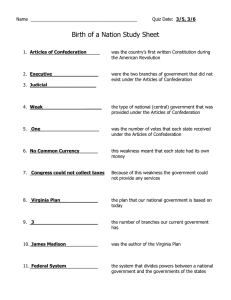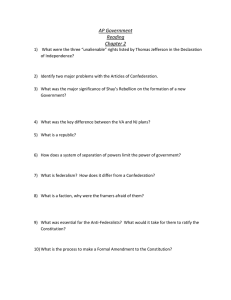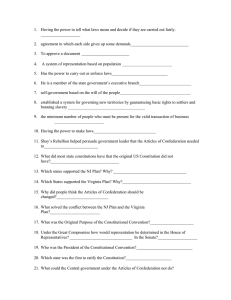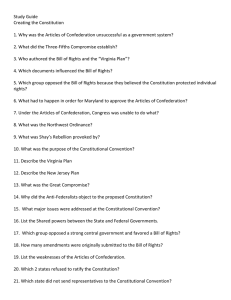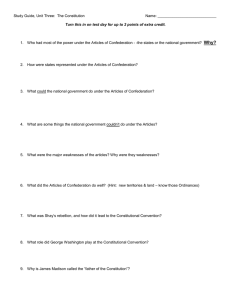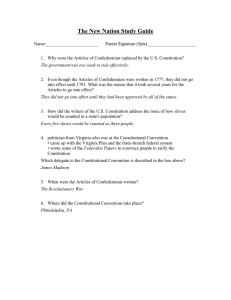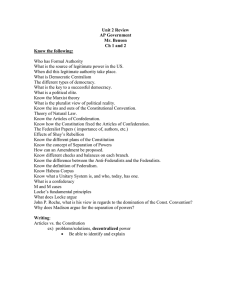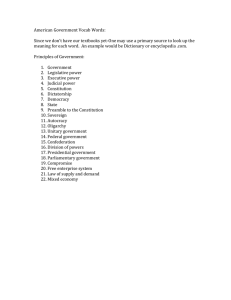SOL 7a & 7b: Articles of Confederation and the Constitutional Convention
advertisement
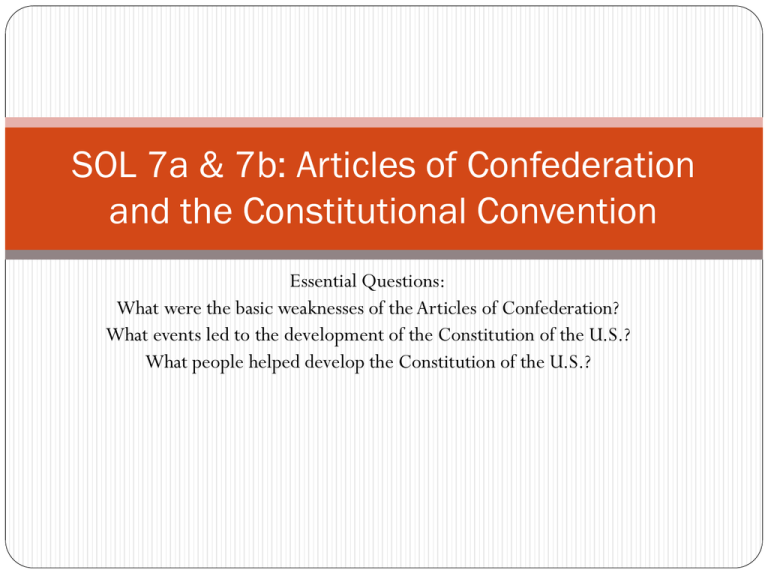
SOL 7a & 7b: Articles of Confederation and the Constitutional Convention Essential Questions: What were the basic weaknesses of the Articles of Confederation? What events led to the development of the Constitution of the U.S.? What people helped develop the Constitution of the U.S.? Articles of Confederation Provided for a weak national government Gave Congress no power to tax or regulate commerce among the states. Provided for no common currency (money) Gave each state one vote regardless of their size Provided for no executive or judicial branches Confederation to Constitution Weaknesses in the Articles of Confederation led to the effort to draft a new constitution The Constitutional Convention State delegates (representatives) met in Philadelphia and decided not to revise the Articles of Confederation but to write a new constitution George Washington was elected president of the Constitutional Convention Delegates debated over how much power should be give to the new national (or federal) government and how large and small states should be represented in the new government The Constitutional Convention The structure of the new national government included three separate branches of government legislative (makes laws) executive (enforces laws) judicial (interprets laws) The Great Compromise decided how many votes each state would get in the Senate and House of Representatives The Constitution was signed at the end of the convention Ratification A minimum (at least) of nine out of 13 states had to vote in favor of the Constitution before it could become law The Bill of Rights Based on the Virginia Declaration of Rights (by George Mason) and the Virginia Statute of Religious Freedom (by Thomas Jefferson) These first ten amendments to the Constitution provide a written guarantee of individual rights (for example, freedom of speech and freedom of religion)
